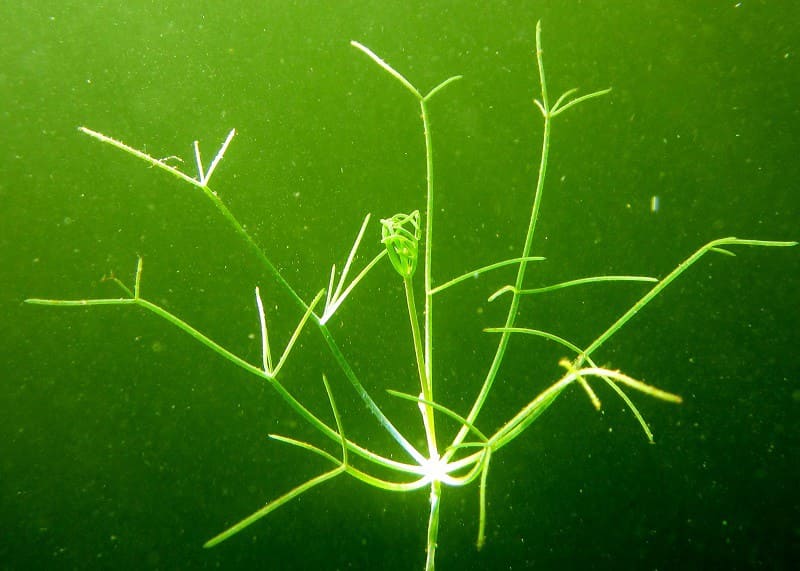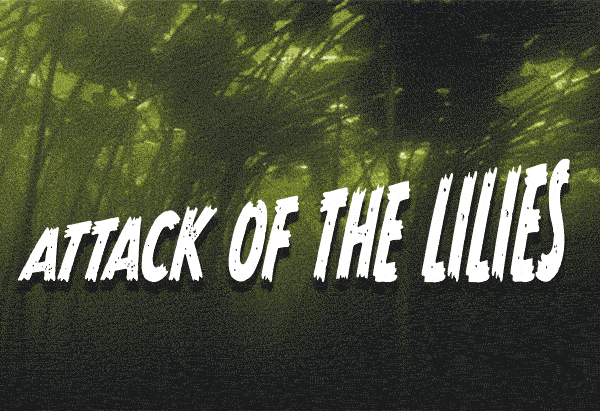Starry stonewort (Nitellopsis obtuse) is a ‘new’ aquatic invader that is getting a lot of attention in the upper Midwest and Northeast not only because of the speed at which it dominates the water feature where it resides, but also because management option choices are not well understood.
Starry stonewort (SSW) is an algae species, but not the “horse hair”, filamentous type we often see in our region, nor is it the suspended micro-algae that makes entire lakes or ponds appear to be very green. SSW is an anchored macrophyte, meaning that it resides on the lake or pond bottom, anchored by structures that look like roots, but they are not, because these anchoring structures do not convey nutrients as roots do. SSW pulls its nutrients from the water, much like Chara, another macrophyte native to this region.
At first thought, a bottom-anchored algae might be beneficial to our nutrient-rich surface impoundments. Unfortunately, it does more harm than good in that SSW eventually takes over the entire lake bottom and becomes so dominant that it crowds out native species. This in turn renders the water body unable to support the necessary diversity of microorganisms and fish that live there. While native Chara can also be dominating, it can be easily managed chemically or by harvesting without unintended consequences.
Conversely, SSW presents two difficult management challenges:
- The structure of the algae is very brittle because it pulls calcium from our limestone-influenced hard waters. Using a mechanical harvester allows SSW fragments to break-off and sink (unlike other photosynthesizing aquatic life that usually float) starting another growth at that spot. This is called spreading by ‘fragmentation’.
- Research has shown that SSW is not predictably responsive to the use of herbicides or algaecides. Multiple studies have produced a good bank of reliable data about how and when to use traditional products to control the growth of SSW, but there does not seem to be any consensus on its reliability to do so. In the meantime, SSW continues to spread because of well-intended but detrimental efforts to remove it mechanically causing fragmentation, or ineffective use of aquatic herbicides and/or algaecides.
One solution to address the spread of SSW is to employ the use of divers to vacuum the growth up and contain the harvested material in filter bags (Diver Assisted Suction Harvesting, or DASH). While this process is more costly on a per acre basis than harvesting or chemical approaches, it does not exasperate the situation by leaving fragments and it is 100% effective at removing growth whereas no assurance can be made regarding chemical applications.
The key is to identify the presence of SSW early before it spreads so that only a small area needs to be served by employing the DASH process.




